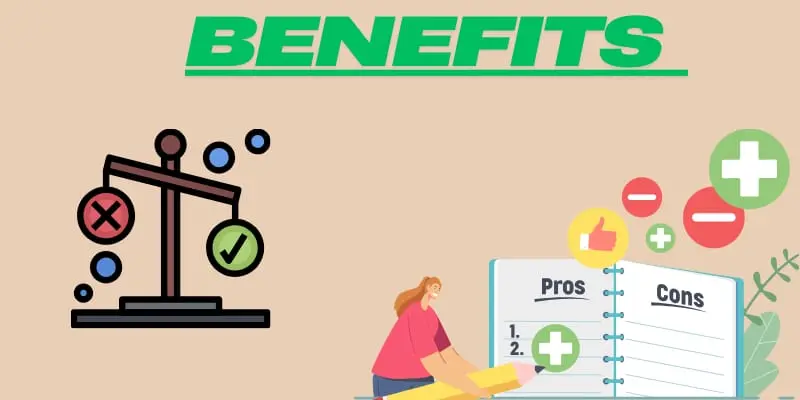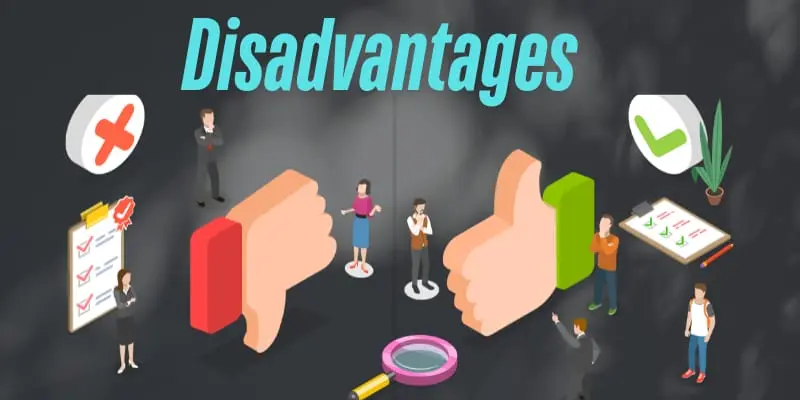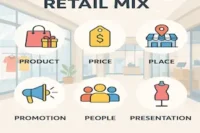Full-price Sell-through Rate – Killer Way to Calculate & Boost
Published: 22 May 2025
In today’s retail industry, a full-price sell-through rate is the most crucial aspect of a retail store’s success. It reflects how effectively a store sells its inventory at the original prices without relying on discounts and markdowns.
A higher full-price sell-through rate indicates that products are resonating with customers at their intended value, which ultimately reduces the need for clearance sales and also protects the brand’s image. And the lower full-price sell-through rate? It shows that products are not meeting customer expectations, like prices may be too high, timing could be off, demand may be lacking, and so on.
But guys, do you know, there are some proven ways available to increase full-price sell-through rate and maximize your profit margins? So let’s come and explore everything about what full-price sell-through rate is, its key pros and cons, and, most importantly, how to increase it.
What Is the Full-price Sell-through Rate?
Full-price sell-through rate measures the percentage of inventory a retailer sells at its original price within a specific time frame. This metric shows how well products perform without potential discounts and promotions.
Guys, as I previously shared, a higher full-price sell-through rate means your products are meeting customer demands through strong quality, demand, and smart pricing strategies. It shows that you’ve nailed product selection, timing, and value perception. This not only helps you maintain healthier profit margins but also builds a stronger brand image by reducing the need for markdowns or clearance sales.
On the other hand, if your full-price sell-through rate is low, it shows that your customers are not feeling satisfied while buying your brands. It may be due to many reasons, such as
- Your product prices may be higher than your competitors
- Quality may not be good
- Your marketing and positioning may fail to communicate value clearly
- And even your products may be off-season or off-demand.
Overall, a low full-price sell-through rate forces you to rely on discounts, which reduces profits and weakens your brand perception. That’s why monitoring this rate regularly and taking corrective action is key to running a successful retail business.
How to Calculate Sell-through Rate?
Calculating the sell-through rate is super duper easy. You just need to divide the number of units sold by the number of units received (or available for sale). After that, multiply the result by 100 to get the percentage.
Here’s the formula:
Sell-Through Rate (%) = (Units Sold ÷ Units Received or available) × 100
For example:
If you received 500 units of a product and sold 300 of them at full price, your sell-through rate would be:
(300 ÷ 500) × 100 = 60%
This means you sold 60% of your inventory—simple as that! Tracking this regularly helps you understand product performance, manage stock better, and improve your buying decisions.
Most of the time, retailers calculate sales through rate every 30 days. If any of your products are on shelves for almost 180 days, it’s a clear signal that your products are not performing well. So, in this case, we mostly add more discounts or offer clearance sales to empty the shelves for new products at full markup.
Benefits of Full-Price Sell-Through Rate

Tracking the full-price sell-through rate offers a lot of benefits to retailers. For example, it helps them understand product performance, customer demand, and pricing effectiveness.
Here’s one by one explanation of each benefit that the full-price sell-through rate offers us.
- Assessing Product Demand: Full-price sell-through rate gives retailers direct insight into how well a product performs without promotional influence. When customers purchase items at full price, it signals genuine interest and confirms the product’s relevance in the current market.
- Maximizing Profit Margins: Selling products at full price ensures that retailers capture the highest possible margin. It reduces the need for markdowns and discount-driven promotions, keeping profitability intact.
- Improving Inventory Planning: Tracking full-price sell-through helps retailers identify which items sell well at full price. This insight allows for better forecasting, reducing the chances of overstock or understock.
- Enhancing Brand Perception: A strong full-price sell-through rate shows that customers see value in the product at its original price. This builds a premium brand image and reduces reliance on constant discounting.
- Reducing Markdowns and Clearances: When products sell through at full price, retailers avoid excessive discounting to clear unsold stock. This helps maintain a cleaner inventory and protects revenue.
- Informing Future Buying Decisions: By understanding which products sold well at full price, buyers can make smarter purchasing decisions. It guides assortment planning and reduces investment in underperforming items.
- Supporting Data-Driven Strategies: Full-price sell-through data gives retailers actionable insights into product performance. It helps refine pricing, merchandising, and promotional tactics with real-time evidence.
Overall, the full-price sell-through rate acts as a powerful indicator of retail health. It empowers retailers to make confident, profitable decisions that align with market demand and long-term brand strategy.
Disadvantages of Full Price Sell Through Rate.

While the full-price sell-through rate offers valuable insights, it also has limitations. Relying on it alone can lead to an incomplete understanding of product performance and business profitability.
Here are some of the key limitations that the full-price sell-through rate has.
- Limited View of Profitability: The full-price sell-through rate only shows how well products sell at their original price, but it doesn’t reflect what the business earns. It overlooks the real costs behind the scenes—like supply chain expenses, markdown strategies, or bundled offers—that can heavily influence final profits. Without these factors, the metric gives a narrow view of true financial performance.
- Ignores Promotional Success: This metric overlooks the impact of successful promotions or strategic discounts that still drive significant revenue. Retailers who only measure full-price performance might miss how well products perform when supported by marketing or pricing tactics.
- May Penalize Smart Discounting: Retailers often use timed discounts to boost traffic and clear seasonal stock. Full-price sell-through rate doesn’t recognize the value of this strategy and may unfairly label these products as underperformers.
- Doesn’t Reflect Inventory Turnover Speed: A product might sell at full price but take too long to move off shelves. In such cases, a high full-price sell-through rate may mask inefficiencies in turnover or missed sales opportunities.
- Vulnerable to External Market Shifts: Changes in consumer behavior, economic conditions, or competitor pricing can all affect full-price sales. This metric may not adapt quickly enough to those shifts, leading to outdated insights if used in isolation.
- Can Mislead Product Evaluation: A low full-price sell-through rate doesn’t always mean a product failed—it could result from stock misallocation, poor visibility in-store, or lack of promotion. Judging performance solely on this rate can lead to incorrect conclusions.
How to Improve Your Full-Price Sell-Through Rate.
Improving our full-price sell-through rate requires a mix of smart planning, sharp execution, and a deep understanding of your customer.
Here are some of the practical ways to improve it:
- Optimize Product Assortment: Carefully curate your product mix to match customer preferences, seasonal trends, and local demand. Offering the right product at the right time increases the chance of full-price sales.
- Strengthen Pricing Strategy: Price your products competitively without undervaluing them. Use market research and perceived value to set prices that customers are willing to pay without waiting for discounts.
- Improve Inventory Allocation: Distribute stock strategically across stores or channels based on data-driven demand forecasts. Avoid overstocking in low-demand locations to prevent forced markdowns.
- Enhance Visual Merchandising: Compellingly show your products, both in-store and online. Strong visuals, smart displays, and engaging storytelling increase product appeal and encourage full-price purchases.
- Create Urgency Without Discounts: Use limited-time launches, exclusivity, or low-stock signals to drive urgency. These tactics motivate purchases without cutting prices.
- Train Sales Staff Effectively: Equip your team with product knowledge and upselling techniques. Confident staff can better convey value, helping to close sales at full price.
- Leverage Customer Feedback: Listen to what your customers are saying about price, quality, and value. Use insights to adjust your product offerings and marketing to better align with expectations.
- Promote Value Over Price: Show customers why the product is worth the full price by talking about its quality, design, or brand. Instead of offering discounts, help them see the real value of what they’re buying.
Hey! My Champs.
So today, we’ve covered everything about what the full-price sell-through rate is. You learned what it means, why it matters, the benefits it brings, its limitations, and how to improve it.
Now it’s your turn to take this knowledge and start tracking, analyzing, and optimizing your full-price sell-through rate like a pro. Keep making smarter decisions, protect your margins, and build a stronger brand—one full-price sale at a time!
Keep shining and stay tuned for more retail insights!

- Be Respectful
- Stay Relevant
- Stay Positive
- True Feedback
- Encourage Discussion
- Avoid Spamming
- No Fake News
- Don't Copy-Paste
- No Personal Attacks



- Be Respectful
- Stay Relevant
- Stay Positive
- True Feedback
- Encourage Discussion
- Avoid Spamming
- No Fake News
- Don't Copy-Paste
- No Personal Attacks





